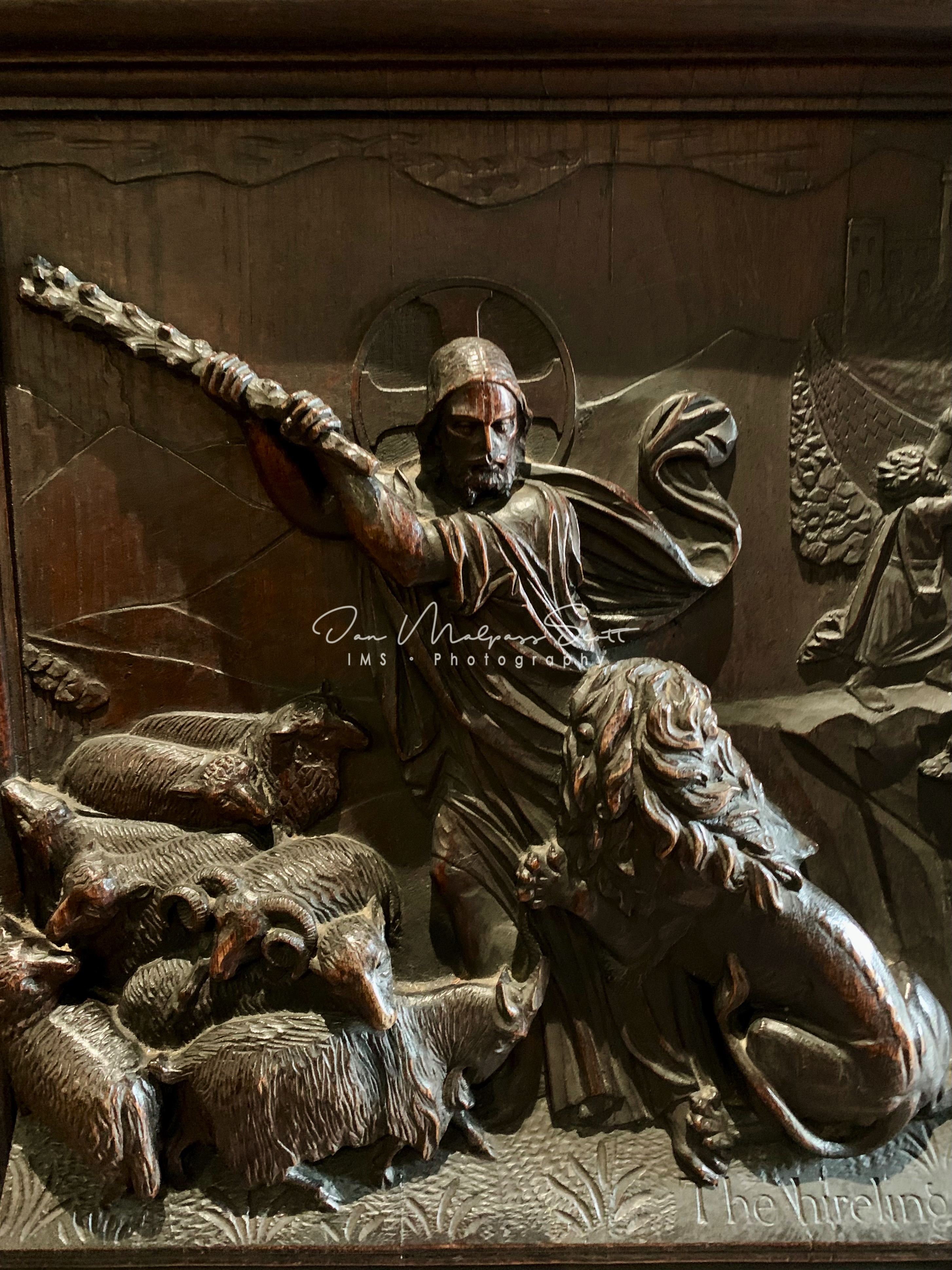![]()
Door carving, St Andrew’s Church, Fort William, Scotland
From: https://www.undiscoveredscotland.co.uk/fortwilliam/standrews/index.html
Standing a little off to one side of Fort William’s High Street towards its north-eastern end is St Andrew’s Church. It is separated from the High Street by its churchyard, which is itself surrounded by a wall entered via a lychgate. St Andrew’s is faced across the High Street by a parade of shops fronted by a covered walkway, and it is perhaps this, coupled with the fact that this part of the street has not been pedestrianised, that makes the church surprisingly easy to overlook.
Standing a little off to one side of Fort William’s High Street towards its north-eastern end is St Andrew’s Church. It is separated from the High Street by its churchyard, which is itself surrounded by a wall entered via a lychgate. St Andrew’s is faced across the High Street by a parade of shops fronted by a covered walkway, and it is perhaps this, coupled with the fact that this part of the street has not been pedestrianised, that makes the church surprisingly easy to overlook.
Standing a little off to one side of Fort William’s High Street towards its north-eastern end is St Andrew’s Church. It is separated from the High Street by its churchyard, which is itself surrounded by a wall entered via a lychgate. St Andrew’s is faced across the High Street by a parade of shops fronted by a covered walkway, and it is perhaps this, coupled with the fact that this part of the street has not been pedestrianised, that makes the church surprisingly easy to overlook.
St Andrew’s is part of the Scottish Episcopal Church, a member of the world-wide Anglican Communion which traces its history back to St Columba and the early days of Christianity in Scotland. Like its sister-church south of the border, the Church of England, the Scottish Episcopal Church is governed by Bishops. This is one of the things that distinguishes it from the much larger Church of Scotland, a Presbyterian Church governed by representatives of the congregation.
This may not initially sound like a major difference, but it was King Charles I’s efforts to impose government by Bishops on the Presbyterian Church of Scotland which led to a riot in St Giles’ Cathedral in Edinburgh on Sunday 23 July 1637. This in turn led directly to the Bishops’ Wars; the Wars of the Covenant; the English Civil War; the execution of Charles I; and Cromwell’s occupation of Scotland: 23 years of wide-ranging conflict that did not really end until the restoration of Charles II in 1660. Those days are, thankfully, long gone, but it helps to know that differences of opinion about church governance were once, quite literally, a matter of life and death.
St Andrew’s is part of the Scottish Episcopal Church, a member of the world-wide Anglican Communion which traces its history back to St Columba and the early days of Christianity in Scotland. Like its sister-church south of the border, the Church of England, the Scottish Episcopal Church is governed by Bishops. This is one of the things that distinguishes it from the much larger Church of Scotland, a Presbyterian Church governed by representatives of the congregation.
This may not initially sound like a major difference, but it was King Charles I’s efforts to impose government by Bishops on the Presbyterian Church of Scotland which led to a riot in St Giles’ Cathedral in Edinburgh on Sunday 23 July 1637. This in turn led directly to the Bishops’ Wars; the Wars of the Covenant; the English Civil War; the execution of Charles I; and Cromwell’s occupation of Scotland: 23 years of wide-ranging conflict that did not really end until the restoration of Charles II in 1660. Those days are, thankfully, long gone, but it helps to know that differences of opinion about church governance were once, quite literally, a matter of life and death.
![]()


